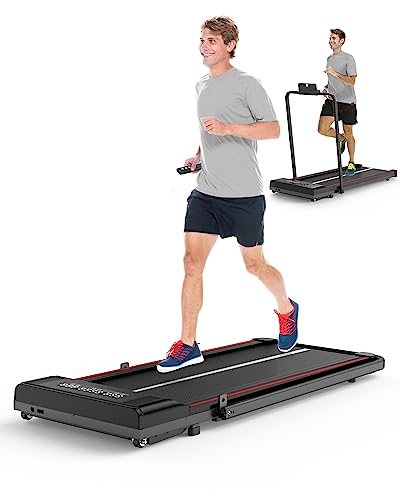Treadmills: A Comprehensive Guide to Understanding Their Functionality, Benefits, and Appropriate Selection
Introduction
Treadmills have ended up being a staple in modern fitness regimens, both in homes and fitness centers worldwide. They offer a convenient and effective way to keep cardiovascular health, increase endurance, and assist in weight management. This short article explores the different types of treadmills, their benefits, functions to consider when acquiring, and some FAQs to assist users in making notified choices.
Types of Treadmills
When it pertains to picking a treadmill, it is crucial to comprehend the various types available in the market. Here are the main classifications:

1. Handbook Treadmills
- System: These treadmills have a simple design and rely on the user's efforts to move the belt.
- Pros: More cost effective, quieter operation, no electricity needed.
- Cons: Limited features, may not provide the exact same variety of exercise strength.
2. Motorized Treadmills
- System: Powered by a motor that drives the belt, permitting users to walk or perform at a set speed.
- Pros: Greater range of speeds and inclines, geared up with many features such as heart rate screens and workout programs.
- Cons: More costly and may need more maintenance.
3. Folding Treadmills
- Mechanism: Designed for those with limited area, these treadmills can be folded for easy storage.
- Pros: Space-saving, typically motorized, versatile functions.
- Cons: May be less durable than non-folding designs.
4. Commercial Treadmills
- Mechanism: High-quality machines designed for usage in health clubs and gym.
- Pros: Built to withstand heavy use, advanced features, often consist of guarantees.
- Cons: Pricey and not ideal for home use due to size.
5. Curved Treadmills
- Mechanism: An unique style that allows users to move the belt using their own energy.
- Pros: Offers a more natural running experience, promotes much better running type.
- Cons: More expensive and can be noisier.
| Treadmill Type | Pros | Cons |
|---|
| Manual | Budget friendly, no electrical power needed | Minimal functions |
| Motorized | Range of speeds, advanced functions | Maintenance required |
| Folding | Space-saving, frequently motorized | May do not have resilience |
| Industrial | Built to last, professional-grade features | Expensive |
| Curved | Natural running experience, promotes great kind | Greater cost |
Advantages of Using Treadmills
Treadmills offer numerous benefits that can add to one's overall health and wellness objectives. A few of these benefits include:
- Convenient Workouts: Treadmills enable users to work out indoors regardless of weather conditions.
- Cardiovascular Health: Regular usage can improve heart health by increasing stamina and promoting healthy flow.
- Weight Management: Effective for burning calories, which aids in weight-loss and management.
- Personalized Workouts: Users can control speed, slope, and period to develop individualized workout experiences.
- Security: Treadmills supply a foreseeable surface, reducing the danger of falls compared to outdoor running.
- Multifunctional: Many treadmills featured functions like heart rate monitors, workout programs, and even home entertainment systems.
Selecting the Right Treadmill
When choosing a treadmill, prospective buyers need to think about several essential elements:
Features to Consider:
- Motor Power: Typically determined in horsepower (HP), a motor strength of a minimum of 2.5 HP is recommended for serious runners.
- Belt Size: A longer and broader belt accommodates various stride lengths, supplying convenience throughout exercises.
- Incline Settings: Adjustable slope functions replicate outdoor hill running and can increase workout strength.
- Weight Capacity: Ensure the treadmill can support the user's weight for security and durability.
- Console Features: Look for user-friendly control panels, exercise programs, and Bluetooth compatibility for streaming music or other functions.
Spending plan Considerations
- Under ₤ 500: Entry-level manual treadmills ideal for casual walkers.
- ₤ 500 - ₤ 1,500: Mid-range motorized treadmills that provide more features and better resilience.
- ₤ 1,500 - ₤ 3,000: High-end designs with advanced innovation, bigger motors, and longer warranties.
- Over ₤ 3,000: Commercial-grade Discount Treadmills (Http://Git.Zkyspace.Top/) ideal for regular usage in health clubs or training facilities.
Often Asked Questions (FAQs)
1. How often should I use a treadmill?
It is recommended to use a treadmill a minimum of three to 5 times a week, integrating various intensity levels for best outcomes.
2. Can I reduce weight by utilizing a treadmill?
Yes, consistent use of a treadmill can add to weight-loss, especially when integrated with a well balanced diet and strength training.
3. What is the best speed to walk on a treadmill for beginners?
A speed of 3 to 4 miles per hour is an ideal variety for novices. It's important to start sluggish and gradually increase speed as convenience and endurance enhance.
4. Do I need to utilize a treadmill if I already run outdoors?
Utilizing a treadmill can offer additional advantages, such as controlled environments and varied workouts (slope, periods) that are not constantly possible outdoors.
5. How do I keep my treadmill?
Routine upkeep includes lubricating the belt, cleaning the deck and console, and checking the motor for optimum performance.
Treadmills are vital tools for those aiming to improve their fitness levels in a controlled and practical way. With various types available, understanding their functions and benefits is crucial for making an informed purchase. By thinking about personal exercise requirements, area schedule, and spending plan restraints, people can find the most suitable treadmill that fits their way of life. Incorporating treadmill workouts into a well balanced fitness regimen can lead to improved health outcomes and a pleasurable workout experience.


